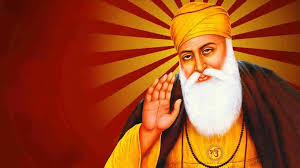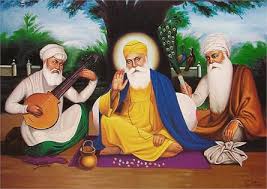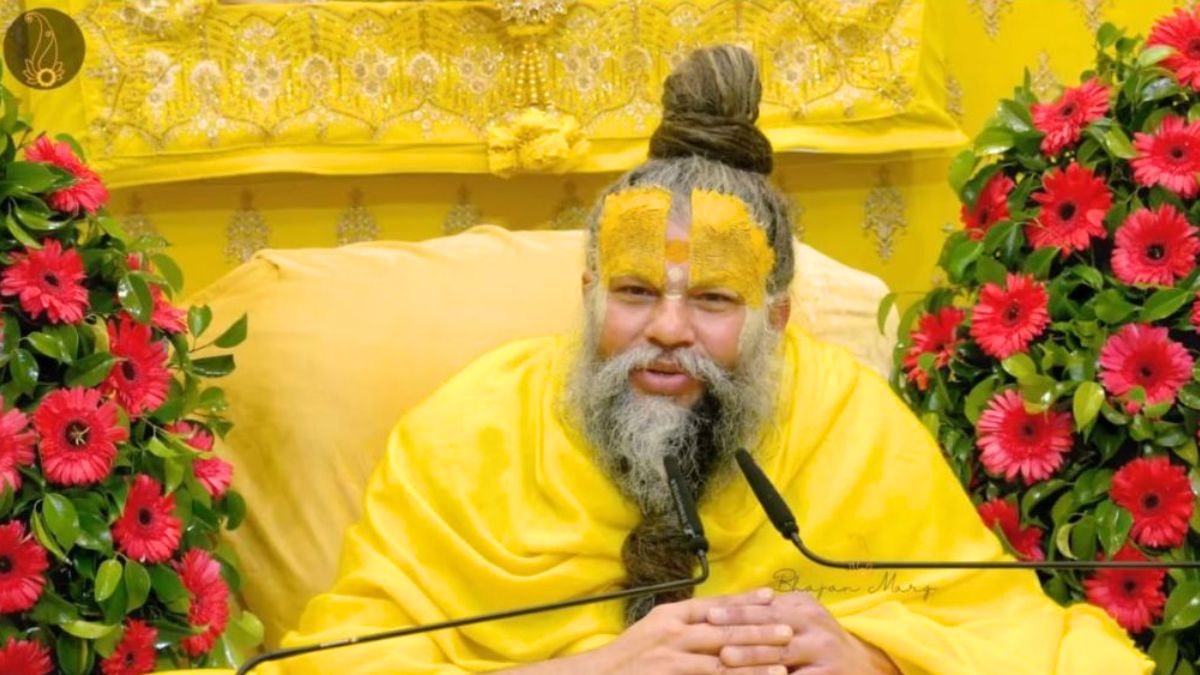Title: Guru nanak Dev ji-Gurupurab

Introduction
Guru Nanak Gurpurab, also known as Guru Nanak Jayanti, is one of the most important festivals in Sikhism, celebrated to mark the birth of Guru Nanak Dev Ji, the founder of the Sikh faith. Guru Nanak Dev Ji was born in 1469 in Talwandi, which is now known as Nankana Sahib in present-day Pakistan. His life and teachings have had a profound impact on society, emphasizing values like compassion, equality, and devotion to a single universal God. Let’s explore the history and significance of this sacred festival and how it is observed across the world today.

The Life of Shri Guru nanak Dev ji
Guru Nanak Dev Ji was born in an era when India was steeped in rigid religious rituals, caste discrimination, and social inequalities. The society of his time was divided by divisions that created barriers between people based on religion, caste, and creed. From a young age, Guru Nanak showed a deep sense of spirituality and compassion, questioning societal norms that discriminated against people and propagated injustice. His teachings emphasized that there is only one God, who is within each of us, and that every human being, regardless of caste, creed, or gender, is equal.
As he grew older, Guru Nanak undertook four major journeys known as “Udasis,” traveling across the Indian subcontinent and beyond to spread his message of love, unity, and devotion to one God. These journeys helped spread the values of Sikhism far and wide and laid the foundation for a new spiritual path that transcended the existing divisions in society.
Significance of Guru Nanak Gurupura
This day is not only a celebration of Guru Nanak Dev Ji’s birth but also a reminder of his eternal teachings that continue to inspire millions worldwide. Known as “Prakash Utsav,” meaning “Festival of Light,” this day signifies the illumination that Guru Nanak’s wisdom brought to a world darkened by ignorance and prejudice.
Traditions and Customs of Guru Nanak Gurupura
The celebration of Guru Nanak Gurpurab typically spans three days and is observed with great devotion and reverence by Sikhs and people of other faiths alike. Here are the key customs associated with the festival:
- Akhand Path
The celebrations begin with an “Akhand Path,” a continuous, uninterrupted reading of the Guru Granth Sahib, the holy scripture of Sikhism, which takes approximately 48 hours to complete. This reading is done with great devotion and respect in gurudwaras or Sikh temples, symbolizing the presence and teachings of Guru Nanak in the lives of his followers. - Nagarkirtan
A day before Guru Nanak Jayanti, a procession known as “Nagarkirtan” is organized, where the Guru Granth Sahib is carried on a beautifully decorated palanquin. Sikhs, dressed in traditional attire, participate in the procession, chanting hymns and singing devotional songs.The Nagarkirtan is an inspiring spectacle, symbolizing unity, faith, and dedication. - The Langar Tradition
One of the most beautiful aspects of Guru Nanak Gurpurab is the tradition of “Langar” or community kitchen, where free meals are served to all, regardless of their background or beliefs. This tradition reflects Guru Nanak’s message of equality and service to humanity. Volunteers prepare and serve the food, which is enjoyed by everyone sitting together as equals. The langar promotes social harmony and reminds people of the importance of humility and selfless service. - Prayers and Hymns
On the day of the festival, the celebrations commence early in the morning with “Asa Di Var,” a prayer that is followed by continuous recitations and devotional singing of “kirtans” from the Guru Granth Sahib. This is a time for reflection, gratitude, and connection with the teachings of Guru Nanak. People spend the day immersed in prayer and songs, meditating on the life and values of Guru Nanak Dev Ji.

The Legacy of Guru nanak Dev ji
Guru Nanak Dev Ji’s teachings laid the foundation of Sikhism and influenced many generations beyond his own. He encouraged people to see beyond material pursuits and strive for inner peace and love for all. The message he shared transcended borders, religions, and time, offering universal wisdom that promotes unity, peace, and respect for all creation.
Conclusion
Guru Nanak Gurpurab is not just a celebration of a spiritual leader’s birth; it is a commemoration of values that challenge us to rise above our differences and work toward a more just and compassionate society. Guru Nanak Dev Ji’s life was dedicated to uplifting the downtrodden and uniting people under the common umbrella of love, equality, and truth. His teachings remind us of the importance of living a life grounded in compassion, humility, and service.
Through Guru Nanak Gurpurab, people around the world honor his legacy, celebrate his wisdom, and renew their commitment to following the path he laid out. This festival is a reminder that despite the changes in the world, the eternal values of truth, equality, and kindness are as important now as they were in Guru Nanak’s time.
Conclusion Frequently Asked Questions(FAQ)
1. What is the significance of Guru Nanak Gurpurab?
Guru Nanak Gurpurab is celebrated to mark the birth anniversary of Guru Nanak Dev Ji, the founder of Sikhism. This festival is significant as it honors his teachings and principles, which emphasize equality, compassion, and devotion to one God. The day is celebrated by Sikhs and followers worldwide to remember his contributions to spirituality and humanity.
2. Why is Guru Nanak Jayanti also called ‘Prakash Utsav’?
Guru Nanak Jayanti is often called “Prakash Utsav,” meaning “Festival of Light,” as Guru Nanak Dev Ji’s birth brought a spiritual light into a world darkened by social inequalities, caste discrimination, and religious conflicts. His teachings are considered a beacon of hope and wisdom for all humanity.
3. When is Guru Nanak Gurpurab celebrated each year?
Guru Nanak Gurpurab is celebrated on Kartik Purnima, the full moon day of the Kartik month in the Hindu lunar calendar, typically falling in October or November each year. The date varies slightly every year depending on the lunar cycle.
4. What are the main rituals associated with Guru Nanak Gurpurab?
The main rituals of Guru Nanak Gurpurab include the Akhand Path (a 48-hour continuous reading of the Guru Granth Sahib), Nagarkirtan (a procession with devotional songs), and the Langar (a community meal where everyone, irrespective of background, is served free food). These customs celebrate Guru Nanak’s values of equality, unity, and service.
5. What is the purpose of Langar during Guru Nanak Gurpurab?
The Langar, or community kitchen, symbolizes equality, as people from all backgrounds sit together and share a meal, breaking down social barriers. This tradition reflects Guru Nanak Dev Ji’s teachings on service and selflessness, emphasizing that we should help others and foster a sense of unity in the community.
6. What were the main teachings of Guru Nanak Dev Ji?
Guru Nanak Dev Ji’s core teachings are often summarized into three principles:
- Naam Japo – Meditate on God’s name and live a life of humility.
- Kirat Karo – Earn an honest livelihood and lead a truthful life.
- Vand Chakko – Share what you have with others and serve the community selflessly.
7. How is Guru Nanak Gurpurab celebrated worldwide?
Guru Nanak Gurpurab is celebrated globally in Sikh communities through prayer, kirtans, langar, and processions. Gurudwaras are illuminated, and gatherings are held to sing hymns and discuss Guru Nanak’s teachings. In regions with large Sikh populations, it is a public holiday, allowing communities to come together in a spirit of devotion and reflection.
8. How can non-Sikhs participate in Guru Nanak Gurpurab?
Non-Sikhs are welcomed warmly in gurudwaras and encouraged to participate in the celebrations. They can join in langar, listen to kirtans, and learn about Guru Nanak Dev Ji’s teachings, which promote universal values of love, equality, and kindness.
9. What is Nagarkirtan, and why is it important?
Nagarkirtan is a procession that takes place a day before Guru Nanak Jayanti, where devotees sing hymns and carry the Guru Granth Sahib on a decorated palanquin. It symbolizes bringing Guru Nanak’s message to the streets and is a way for the community to honor their faith publicly, inspiring unity and devotion.
10. What is the relevance of Guru Nanak Dev Ji’s teachings today?
Guru Nanak Dev Ji’s teachings remain highly relevant, especially in today’s world, which faces issues like inequality, intolerance, and materialism. His messages of compassion, honesty, equality, and service encourage individuals to lead meaningful lives and foster a sense of unity and respect for all.






